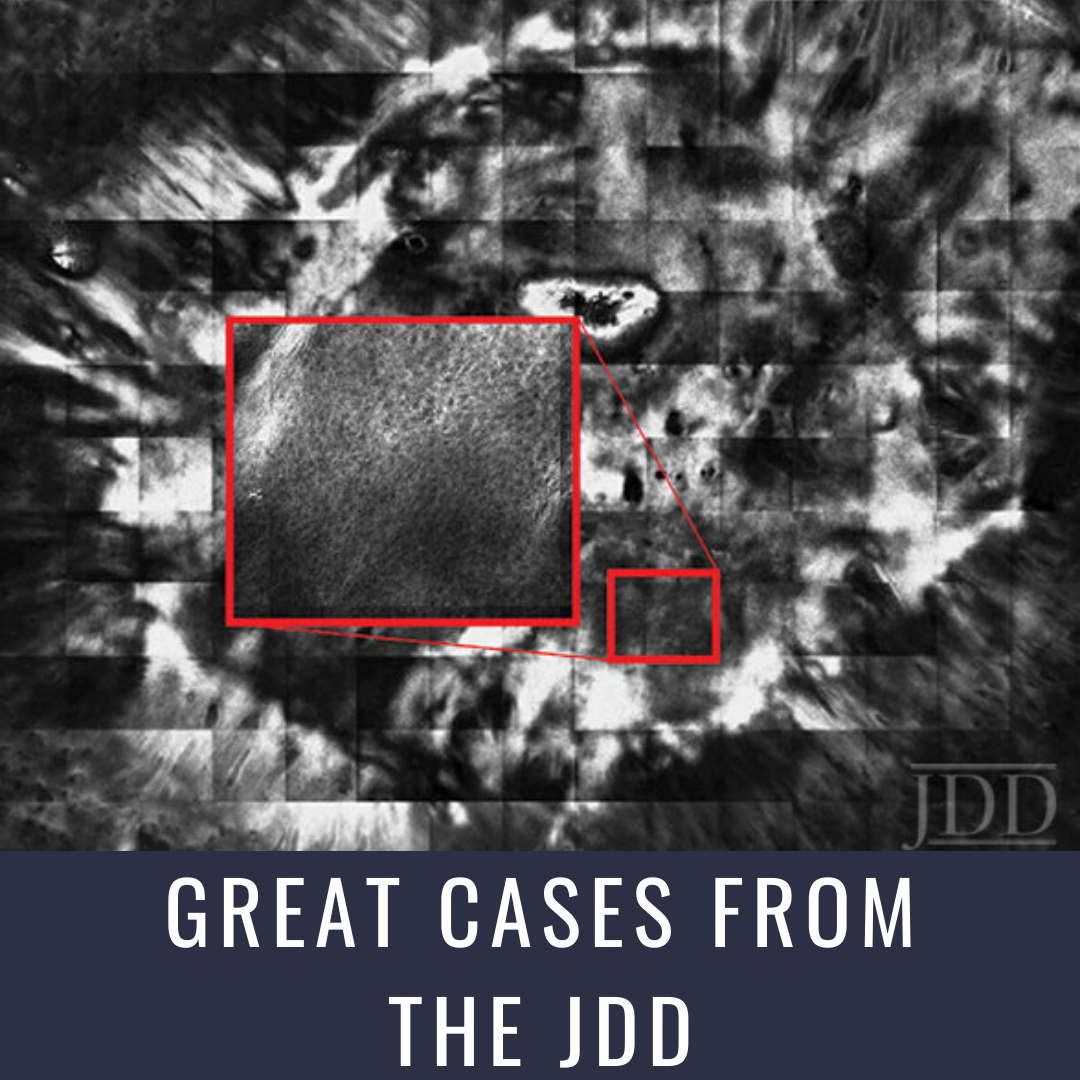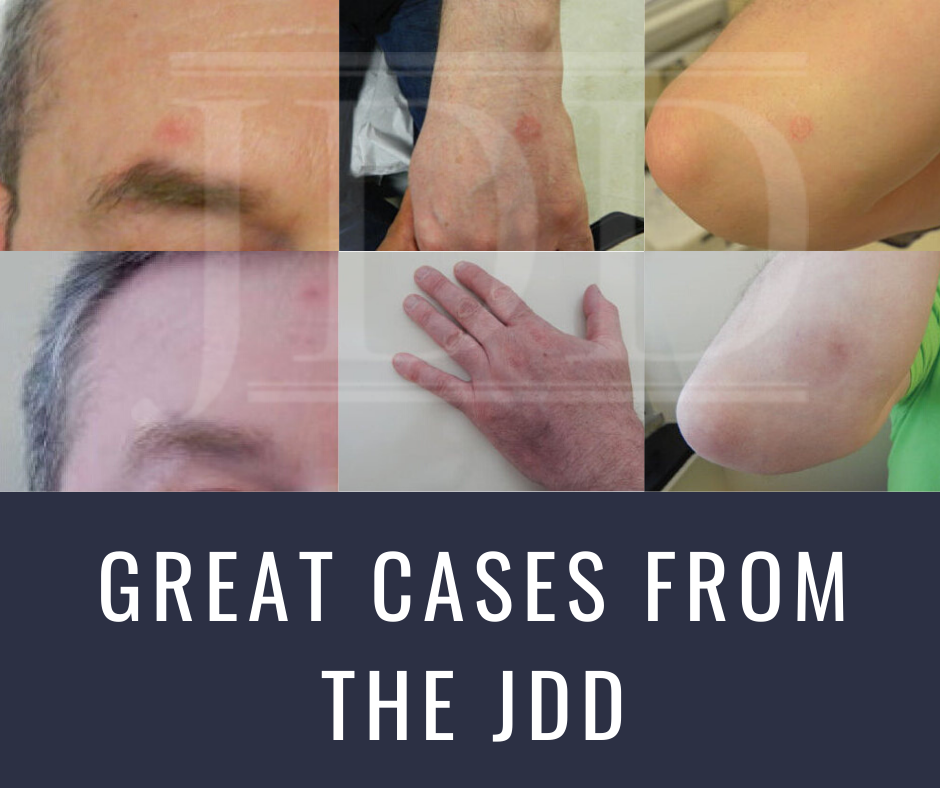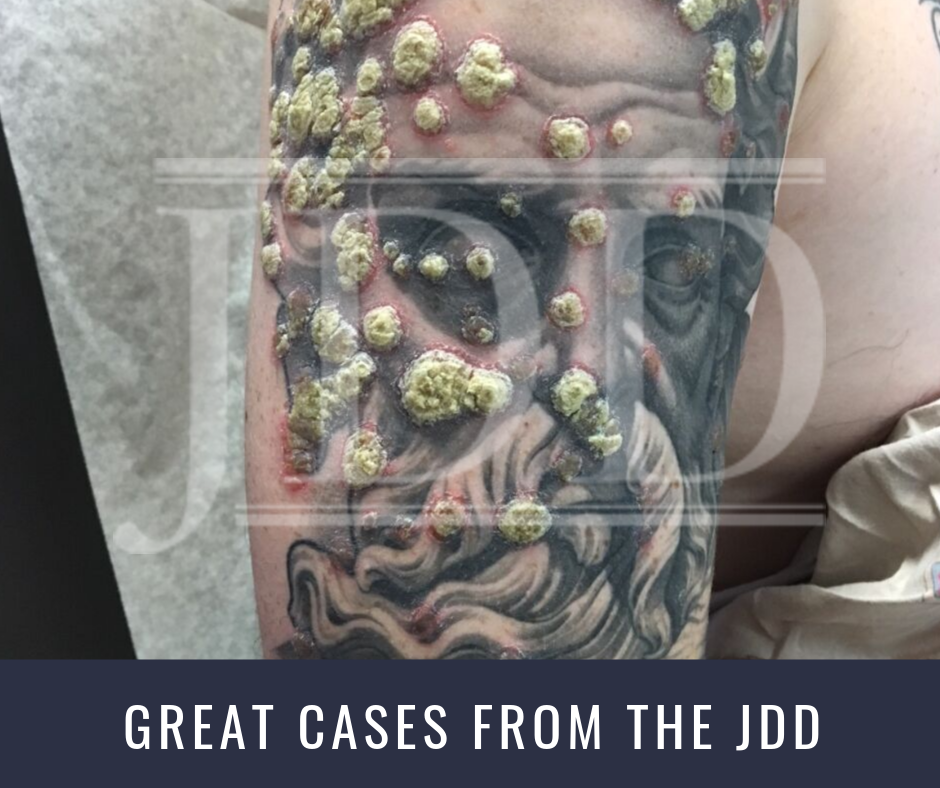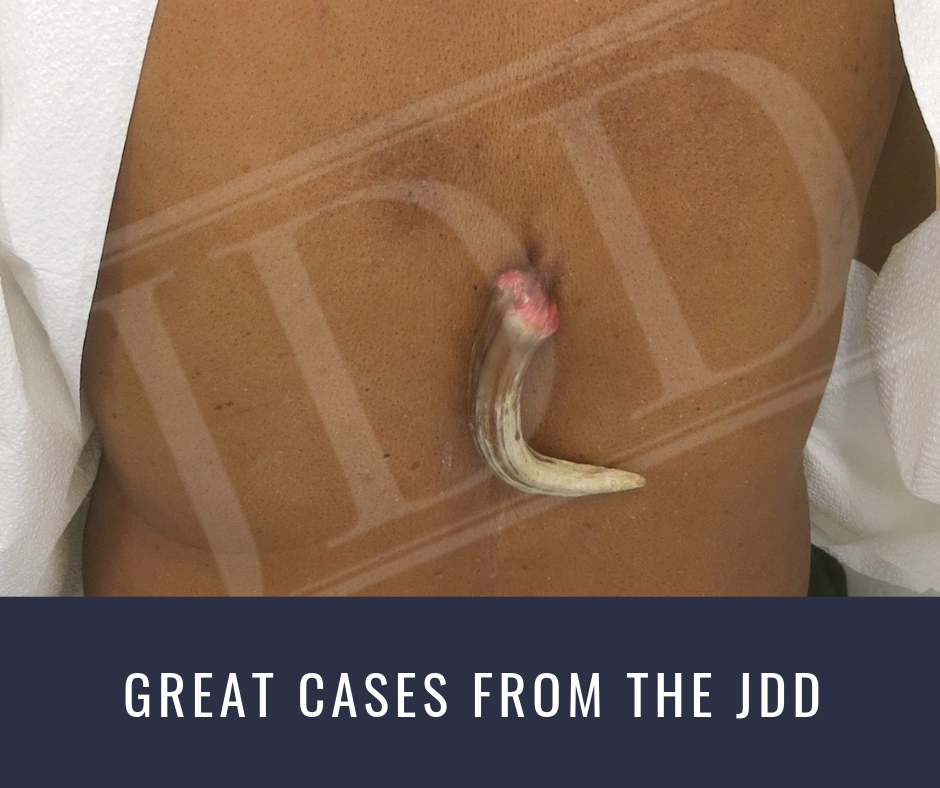Great Cases from the JDD: Wound Healing Using Reflectance Confocal Microscopy
837583758375 Reflectance Confocal Microscopy (RCM) is a new noninvasive skin imaging modality that is comparable to traditional histopathology. Authors Radhika Srivastava BA, Catherine Reilly BS, Gina Francisco MBS, Hamza Bhatti DO, and Babar K. Rao MD present serial in vivo RCM imaging of an atypical nevus after shave excision over a 1-month period. Findings on RCM images are consistent with the inflammatory, …
Reflectance Confocal Microscopy (RCM) is a new noninvasive skin imaging modality that is comparable to traditional histopathology. Authors Radhika Srivastava BA, Catherine Reilly BS, Gina Francisco MBS, Hamza Bhatti DO, and Babar K. Rao MD present serial in vivo RCM imaging of an atypical nevus after shave excision over a 1-month period. Findings on RCM images are consistent with the inflammatory, …
 Reflectance Confocal Microscopy (RCM) is a new noninvasive skin imaging modality that is comparable to traditional histopathology. Authors Radhika Srivastava BA, Catherine Reilly BS, Gina Francisco MBS, Hamza Bhatti DO, and Babar K. Rao MD present serial in vivo RCM imaging of an atypical nevus after shave excision over a 1-month period. Findings on RCM images are consistent with the inflammatory, …
Reflectance Confocal Microscopy (RCM) is a new noninvasive skin imaging modality that is comparable to traditional histopathology. Authors Radhika Srivastava BA, Catherine Reilly BS, Gina Francisco MBS, Hamza Bhatti DO, and Babar K. Rao MD present serial in vivo RCM imaging of an atypical nevus after shave excision over a 1-month period. Findings on RCM images are consistent with the inflammatory, … Continue reading "Great Cases from the JDD: Wound Healing Using Reflectance Confocal Microscopy"


 Authors Julie K. Nguyen MD, Silvia Mancebo MD, Brady Bleicher MD, and Jared Jagdeo MD MS present a case report of a patient with localized porokeratosis lesions on the face and extremities. Brought to you by the Journal of Drugs in Dermatology, a product of SanovaWorks.
Introduction
Porokeratosis is a disorder of epidermal keratinization that encompasses multiple clinical variants based on d …
Authors Julie K. Nguyen MD, Silvia Mancebo MD, Brady Bleicher MD, and Jared Jagdeo MD MS present a case report of a patient with localized porokeratosis lesions on the face and extremities. Brought to you by the Journal of Drugs in Dermatology, a product of SanovaWorks.
Introduction
Porokeratosis is a disorder of epidermal keratinization that encompasses multiple clinical variants based on d …  Abstract
Botulinum toxin type A (BTA) is a neurotoxic protein that prevents the release of neurotransmitters from presynaptic nerves and has shown promise in treating neuropathic pain. Recently, BTA has been used to treat painful keloids and scars. We present a patient with refractory neuropathic pain in a normotrophic spread-scar treated with the injection of BTA.
A 47-year-old Caucasian female …
Abstract
Botulinum toxin type A (BTA) is a neurotoxic protein that prevents the release of neurotransmitters from presynaptic nerves and has shown promise in treating neuropathic pain. Recently, BTA has been used to treat painful keloids and scars. We present a patient with refractory neuropathic pain in a normotrophic spread-scar treated with the injection of BTA.
A 47-year-old Caucasian female …  Authors Jacob Reinhart MD, Matthew Willett MD, and Neil Gibbs MD present a case of psoriatic lesions precipitated by an upper arm tattoo.
Psoriasis is a common dermatologic skin condition with a variety of morphologic presentations. These variations include the less common hyperkeratotic form, psoriasis ostracea, defined as having pronounced adherent scales (skin lesions) resembling an oyster s …
Authors Jacob Reinhart MD, Matthew Willett MD, and Neil Gibbs MD present a case of psoriatic lesions precipitated by an upper arm tattoo.
Psoriasis is a common dermatologic skin condition with a variety of morphologic presentations. These variations include the less common hyperkeratotic form, psoriasis ostracea, defined as having pronounced adherent scales (skin lesions) resembling an oyster s …  Introduction
We present a case of one of the largest cutaneous horns recorded in the known literature as an opportunity to explore diagnostic considerations and treatment options. Cutaneous horns are common exophytic neoplasms composed of dense keratin that are always secondary to primary lesions, which can be benign or malignant. Due to the variance of the primary lesion, diagnostic biopsies are …
Introduction
We present a case of one of the largest cutaneous horns recorded in the known literature as an opportunity to explore diagnostic considerations and treatment options. Cutaneous horns are common exophytic neoplasms composed of dense keratin that are always secondary to primary lesions, which can be benign or malignant. Due to the variance of the primary lesion, diagnostic biopsies are …